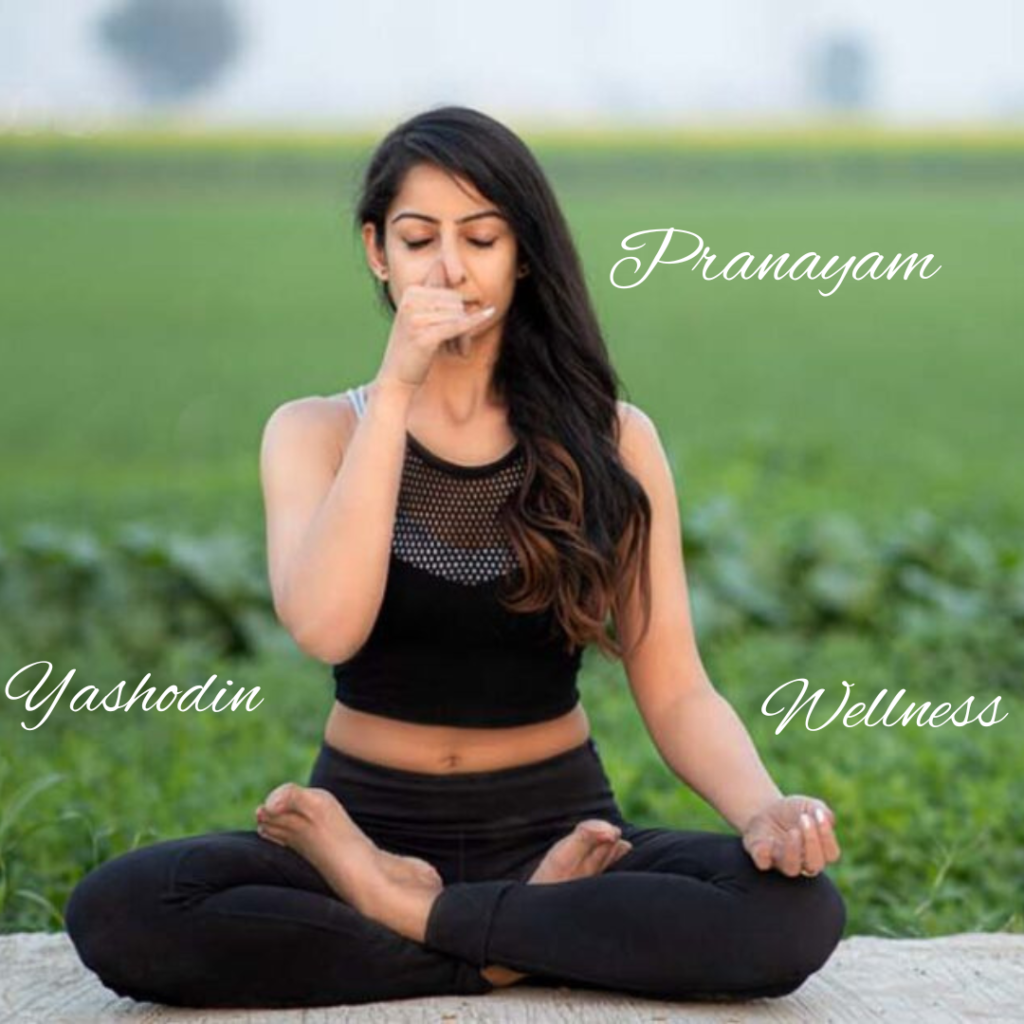Yoga Therapy - Pranayam

Pranayama is a practice in yoga involving the regulation of breath through specific techniques and exercises. It is derived from two Sanskrit words: “prana,” meaning life force or vital energy, and “ayama,” meaning control or extension. Pranayama is a crucial part of yoga and is often practiced alongside physical postures (asanas) and meditation.
Types of Pranayama
- Nadi Shodhana (Alternate Nostril Breathing): This involves alternating breaths between the left and right nostrils.
- Kapalabhati (Skull Shining Breath): A rapid, forceful exhalation followed by passive inhalation.
- Bhramari (Bee Breath): Producing a humming sound while exhaling.
- Ujjayi (Ocean Breath): Constriction of the throat while inhaling and exhaling.
- Anulom Vilom (Alternate Nostril Breathing): Similar to Nadi Shodhana but with slight variations in technique.
- Bhastrika (Bellows Breath): Forceful inhalation and exhalation.
- Sheetali (Cooling Breath): Inhaling through a rolled tongue or the mouth and exhaling through the nose.
- Sheetkari (Hissing Breath): Similar to Sheetali but involves hissing sound while inhaling.
Benefits of Pranayama
- Improves Lung Function: Enhances lung capacity and efficiency, promoting better oxygenation.
- Reduces Stress and Anxiety: Activates the parasympathetic nervous system, inducing relaxation and reducing cortisol levels.
- Boosts Immune System: Improves overall health and resistance to illnesses.
- Increases Mindfulness: Enhances mental clarity, focus, and concentration.
- Balances Emotions: Helps in managing emotions and reducing mood swings.
- Improves Sleep Quality: Promotes better sleep patterns and helps in combating insomnia.
- Enhances Cardiovascular Health: Reduces blood pressure and improves heart rate variability.
- Supports Digestion: Activates the digestive system and improves metabolic functions.
- Detoxifies the Body: Helps in the elimination of toxins through increased oxygenation.
- Promotes Longevity: Contributes to overall well-being and longevity by maintaining physical and mental health.
How to Practice Pranayama
- Find a Comfortable Position: Sit in a comfortable position with a straight back. You can sit cross-legged on the floor or on a chair with feet flat on the ground.
- Focus on Your Breath: Begin by taking deep breaths, inhaling and exhaling slowly.
- Choose a Technique: Select a pranayama technique to practice. Start with simpler ones like Nadi Shodhana or Anulom Vilom.
- Consistency: Practice regularly, ideally at the same time each day, to establish a routine.
- Mindfulness: Pay attention to your breath and the sensations in your body. Keep your mind focused and avoid distractions.
- Duration: Start with a few minutes and gradually increase the duration as you become more comfortable.
Precautions
- Practice on an Empty Stomach: Perform pranayama on an empty stomach or a few hours after a meal.
- Avoid Strain: Do not force your breath or strain your body. Practice gently and comfortably.
- Medical Conditions: If you have any medical conditions, consult a healthcare provider before starting pranayama.
- Pregnancy: Pregnant women should practice pranayama under the guidance of a qualified instructor.
Pranayama is a powerful tool for enhancing physical, mental, and emotional well-being. Regular practice can lead to profound improvements in overall health and quality of life.
Yashodin Wellness Solutions teaches about Pranayam techniques to become healthy.
